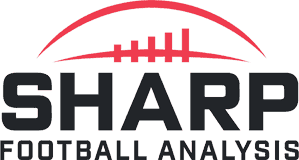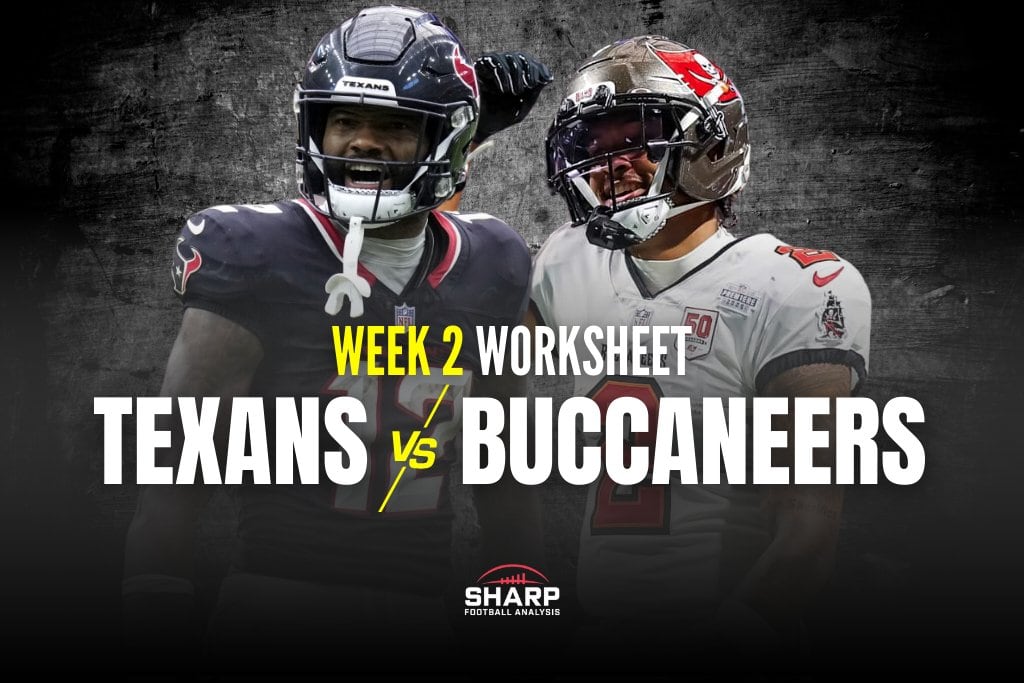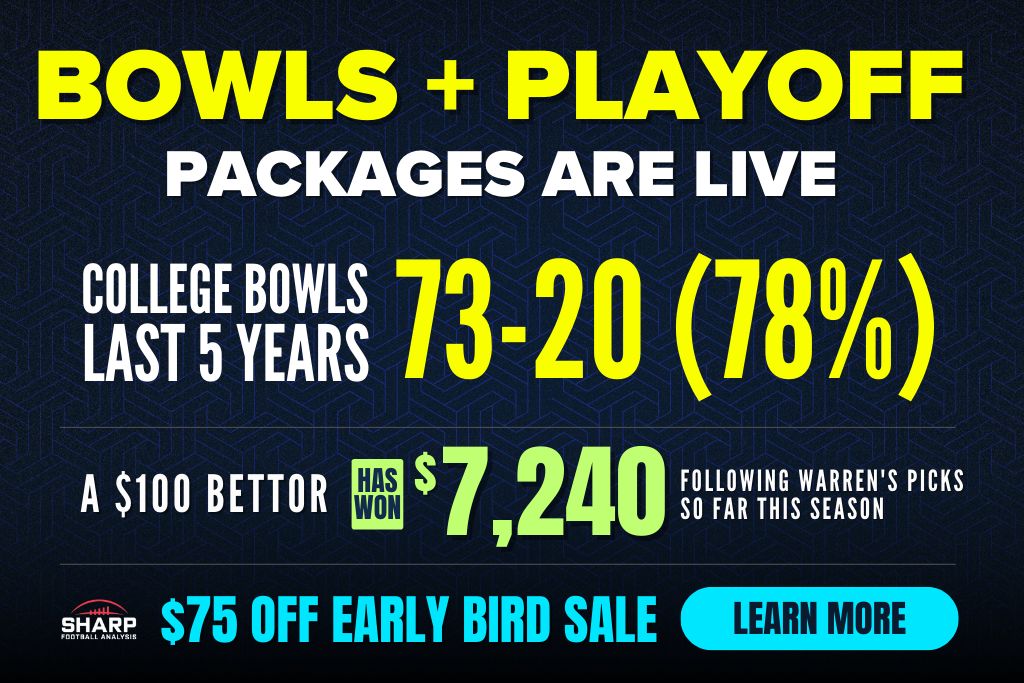The Worksheet, a comprehensive fantasy football preview by Rich Hribar, breaks down everything you need to know about the Week 2 matchup between the Texans and Bucs on Monday Night Football.
Find a breakdown of every Week 2 NFL game in our Worksheet Hub.
| Tampa Bay | Rank | @ | Houston | Rank |
|---|---|---|---|---|
| 2.5 | Spread | -2.5 | ||
| 20.0 | Implied Total | 22.5 | ||
| 23.0 | 12 | Points/Gm | 9.0 | 30 |
| 20.0 | 14 | Points All./Gm | 14.0 | 10 |
| 56.0 | 23 | Plays/Gm | 57.0 | 21 |
| 71.0 | 28 | Opp. Plays/Gm | 57.0 | 11 |
| 4.6 | 21 | Off. Yards/Play | 4.6 | 20 |
| 5 | 18 | Def. Yards/Play | 5.2 | 20 |
| 41.07% | 17 | Rush% | 47.37% | 11 |
| 58.93% | 16 | Pass% | 52.63% | 22 |
| 39.44% | 12 | Opp. Rush % | 43.86% | 19 |
| 60.56% | 21 | Opp. Pass % | 56.14% | 14 |
- Tampa Bay (27.0) and Houston (26.7) ranked 27th and 28th in yards per drive in Week 1.
- Only 36% of Houston's sets of downs reached third down, the lowest rate in the league (the league average in Week 1 was 50.7%).
- Houston only converted 22.2% (2 of 9) of third downs, the second-lowest rate of any team in Week 1.
- Houston had a 36.4% success rate on offense in Week 1, ahead of only the Giants (34.8%) and Titans (24.1%).
- Tampa Bay had a 37.9% success rate on offense (24th) after a 46.5% rate in 2024 (third).
- Houston running backs faced a light box on a league-high 52.4% of their rushing attempts.
- The Texans used 11 personnel (one running back and one tight end) on a league-high 80.7% of their snaps.
Trust = spike production for that player
Quarterback
Baker Mayfield: Mayfield turned in a good fantasy line on Sunday, finishing as the QB11 (22.6 points).
He laughed in the face of predicted touchdown regression in Week 1, posting a 9.4% touchdown rate.
The league rate in Week 1 was 3.7%.
While gamers will take their fantasy points to the bank, Mayfield’s final fantasy output masked a number of the concerns we had coming into the season with this offense.
New offensive coordinator Josh Grizzard talked a lot this offseason about emphasizing downfield passing, a year after Liam Coen nurtured the best season Mayfield has posted through a short passing attack.
Mayfield averaged 10.4 air yards per pass attempt in Week 1, third in the league.
In 2024, it was 7.0 yards downfield (28th).
46.9% of his throws were 10 or more yards downfield (third).
Last year, that was 32.1% (16th).
He threw the ball at or behind the line of scrimmage on 15.6% of his passes (5th-lowest).
With Coen, that was 25.8% (31st).
As a byproduct of taking so many downfield shots with lower success rates, Mayfield completed 53.1% of his passes (29th), ahead of only Bryce Young, Russell Wilson, and Cam Ward.
Mayfield’s expected completion rate was only 56.5%, the second lowest in the league.
Only 26.9% of Mayfield's yards were after the catch in Week 1 (31st).
He had a 54.2% rate in 2024 (8th).
Even with all those deep throws, Mayfield only threw for 5.2 yards per pass attempt, which was 25th in Week 1.
In 2024, on that diet of quick passing, Mayfield averaged 7.9 Y/A, seventh in the league.
The other thing you need to do to throw the ball downfield is pass protect, which was a significant area of concern with Tristan Wirfs absent.
Mayfield was pressured on 40.5% of his dropbacks, which was 24th in the league.
Against the Falcons.
Maybe we will look at this Atlanta defense several weeks from now, and they will look underrated, but this was a unit that was 30th in the league in pressure rate in 2024.
Even if this Atlanta defense ends up as a strong unit moving forward, we know the Houston defense is good.
They posted a 41.2% pressure rate in Week 1, eighth in the league.
The Buccaneers are a road underdog with a 20-point team total.
Maybe Mayfield keeps getting over with a gaudy touchdown rate, but the underlying metrics from Week 1, the Houston defense, and the implied game environment are warning us to proceed with caution with him as more of a QB2.
C.J. Stroud: Stroud ended Week 1 as QB26 (8.7 points), completing 19 of 27 passes for 188 yards with no touchdowns and an interception.
He added 32 rushing yards.
We entered this season with significant concerns about this Houston offensive line, and that proved to be an issue in Week 1.
Stroud ended up being pressured on 41.2% of his dropbacks (26th).
New offensive coordinator Nick Caley was another new play caller who took his lumps in Week 1.
Despite Houston entering the week down Christian Kirk, they played 11 personnel at the league’s highest rate instead of insulating their front against an intense pass rush.
With three or more wide receivers on the field, he threw for only 6.0 Y/A and a 67.3 rating on those dropbacks.
The Texans also used motion on only 35.3% of Stroud’s dropbacks (26th) and play action on 11.1% (30th).
When Houston did use motion, Stroud was 9 of 11 (81.8%) for 105 yards (9.5 Y/A) and a 106.4 rating.
Using play action, Stroud was 3 of 3 for 47 yards (15.7 Y/A).
Caley comes from the Sean McVay coaching tree, but we have seen McVay start to shift away from heavy 11 personnel, playing more under center, and using more play action.
He has always used a lot of motion, so, oddly, it was not a part of this offense.
Caley is a first-time play caller, so we will let things breathe and see what adjustments are made moving forward.
Stroud is a QB2 for fantasy.
He did scramble more in Week 1, which was the third-highest rate of his career.
If looking for a carrot beyond the lackluster game total, Tampa Bay allowed 15.9 passing points in the opener (26th) to Michael Penix.
Running Back
Bucky Irving: The box score was not flattering for Irving in Week 1.
He rushed 14 times for 37 yards (2.6 YPC).
We discussed pass protection with Mayfield, but the run blocking did not improve.
Irving was hit at or behind the line on 57.1% of his runs.
He only caught 4 passes for 8 yards, but he salvaged the day with a 9-yard touchdown grab.
While the box score was not overly impressive, Irving’s usage was where we wanted it.
He had 81.8% of the backfield touches, RB9 on the week.
Irving ran a pass route on 56.8% of the team’s passing plays (RB15) after a 36.2% rate as a rookie.
Irving also played every red zone snap in the opener.
All of that signals he has a grip on this backfield and all of the high-value touches to be in contention as a fantasy RB1. We need better offensive performance and play up front.
Things do not get easier here against Houston.
The Texans only allowed 68 yards rushing on 19 running back runs (3.6 YPC) in Week 1 to the Rams backfield after ranking fourth in allowing 3.9 yards per carry to backs in 2024.
Nick Chubb: Chubb had an early grasp on this backfield in the opener, playing 28 snaps with 13 touches (all runs) for 60 yards.
Dare Ogunbowale was second in snaps (15), followed by Woody Marks and Dameon Pierce (7 each).
Chubb got to run against light front all afternoon due to the heavy use of 3WR sets, but he still did not have enough overall touches while being a zero in the passing game to find fantasy production.
He handled 56.5% of the backfield touches, RB26 on the week.
On his usage, Chubb is a touchdown-dependent FLEX.
After posting a 65.3% success rate against running back runs in 2024 (5th), the Bucs had a 77.3% success rate in Week 1, wiping out the Atlanta backs on the ground.
They allowed 48 rushing yards on 22 backfield runs (2.2 YPC).
Wide Receiver
Nico Collins: Perhaps the largest indictment for Caley in his first game as a play caller was that Collins only managed to catch 3 passes for 25 yards.
He only received 5 targets, drawing a target on 16.7% of his routes.
That was his lowest rate in a game since Week 9 of the 2023 season.
Yes, the Rams knew that Collins was the focal point after Kirk was ruled out, but this was Caley’s first test in showing that he could scheme his lead target open even when the defense knew they had to go to him.
It was a letdown in Week 1, but we can’t eject on Collins as a WR1 after one week; we need this system to do a better job getting him the football.
Incorporating some of the things mentioned with Stroud can go a long way.
Collins was still on the field for 88.2% of the dropbacks.
Tampa Bay did do a good job on the back end in Week 1, ranking fourth in fantasy points allowed per target to receivers.
They allowed a 51.9% completion rate (6th) and 5.2 yards per target (5th) to the Atlanta receivers.
Mike Evans: Evans collected 5 of 8 targets for 51 yards on Sunday.
He worked as the WR1, drawing a team-high 26.7% of the targets with a target on 24.2% of his routes.
This is a tougher spot for Evans because the Texans rolled over their success defending outside receivers.
Evans still has touchdown equity in this passing game, but he is more of a touchdown-based WR2 option on Sunday night, like we saw with Davante Adams in Week 1.
Emeka Egbuka: Egbuka delivered on high expectations in Week 1, catching 4 of 6 targets for 67 yards with a pair of touchdowns.
He played 97.3% of the passing plays, the highest rate of any rookie in Week 1.
If there is anything to bristle while keeping our feet on the ground with him, the target opportunities were just mild.
He had 20% of the team's targets (the same as Sterling Shepard) with a target on 16.7% of his routes.
While staying grounded with Egbuka as a WR3 with upside, that can be positive because he has room to grow as a target earner.
This offense is still thin behind Evans.
Egbuka also moved around a decent amount in his first game.
He played 55.8% of his snaps out wide and 44.2% in the slot.
That latter rate is what is important here.
In 2024, the Texans allowed 8.5 yards per target (21st) and a league-high 10.9% touchdown rate to slot receivers.
In Week 1, they allowed 8 receptions for 119 yards to receivers from the slot.
Houston WRs: Without Kirk, the Texans rolled out every wide receiver behind Collins on the depth chart in Week 1.
Xavier Hutchinson ran 23 routes (67.6% of the passing plays), catching 2 passes for 30 yards.
Justin Watson ran 18 routes, catching 2 passes for 27 yards.
Jayden Higgins ran 14 routes, catching 2 passes for 32 yards.
Jaylin Noel ran 13 routes, catching 1 pass for 7 yards.
It was clear that they did not trust their rookie receivers yet.
Even in single-game DFS, everyone here is a blind dart throw.
If Christian Kirk does return, he is a volatile FLEX coming off a hamstring injury.
Sterling Shepard: Shepard is only in play for single-game DFS, but he does have some matchup appeal there.
He was on the field for 73% of the dropbacks in Week 1, matching Egbuka with 6 targets (3-39-0).
Shepard also played 51.4% of his snaps in the slot, tying into the matchups notes laid out earlier.
Tight End
Dalton Schultz: Even with the Houston receiver room in flux for Week 1, Schultz only managed 3 catches for 28 yards.
He was also only on the field for 61.8% of the dropbacks, TE27 on the week.
With Cade Stover going on injured reserve, that frees up Schultz for more routes.
The Bucs allowed 7 catches to Kyle Pitts a week ago to offer some floor potential for Schultz as a TE2.
Cade Otton: Otton did not catch a pass in Week 1, drawing three targets on 31 routes (83.8%).
He was on the field more than Schultz if you are chasing a tight end in single-game DFS.

More Week 2 Fantasy Breakdowns From The Worksheet:
| Matchup | Time |
|---|---|
| Commanders @ Packers | Thursday Night Football |
| Jaguars @ Bengals | Sunday -- 1 p.m. ET |
| Giants @ Cowboys | Sunday -- 1 p.m. ET |
| Bears @ Lions | Sunday -- 1 p.m. ET |
| Rams @ Titans | Sunday -- 1 p.m. ET |
| Patriots @ Dolphins | Sunday -- 1 p.m. ET |
| 49ers @ Saints | Sunday -- 1 p.m. ET |
| Bills @ Jets | Sunday -- 1 p.m. ET |
| Seahawks @ Steelers | Sunday -- 1 p.m. ET |
| Browns @ Ravens | Sunday -- 1 p.m. ET |
| Broncos @ Colts | Sunday -- 4:05 p.m. ET |
| Panthers @ Cardinals | Sunday -- 4:05 p.m. ET |
| Eagles @ Chiefs | Sunday -- 4:25 p.m. ET |
| Falcons @ Vikings | Sunday Night Football |
| Bucs @ Texans | Monday Night Football |
| Chargers @ Raiders | Monday Night Football |


















